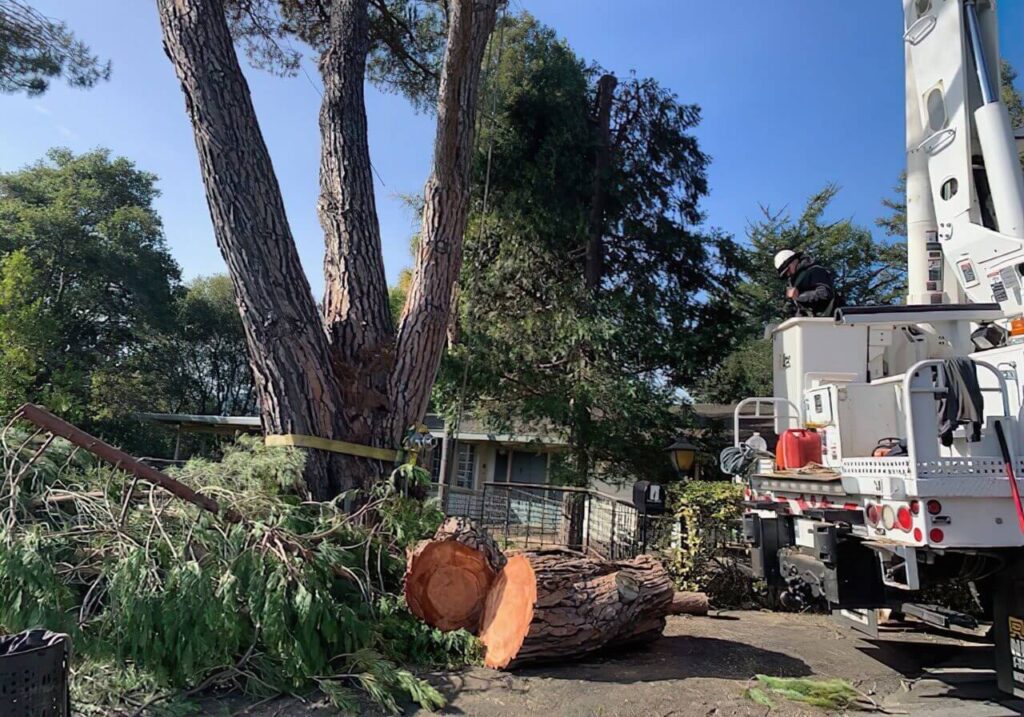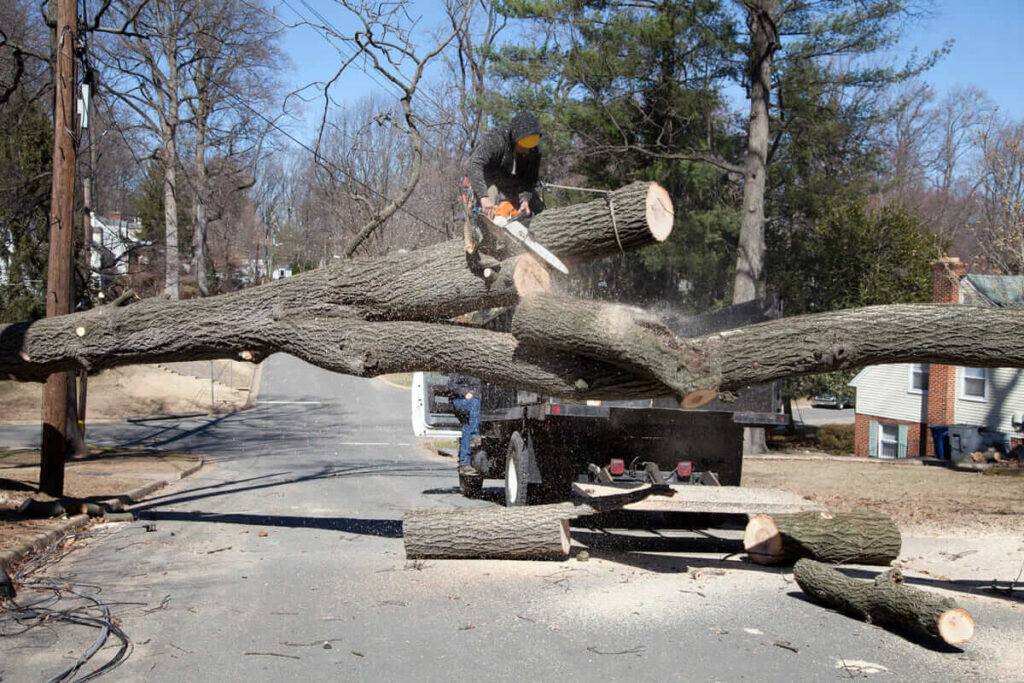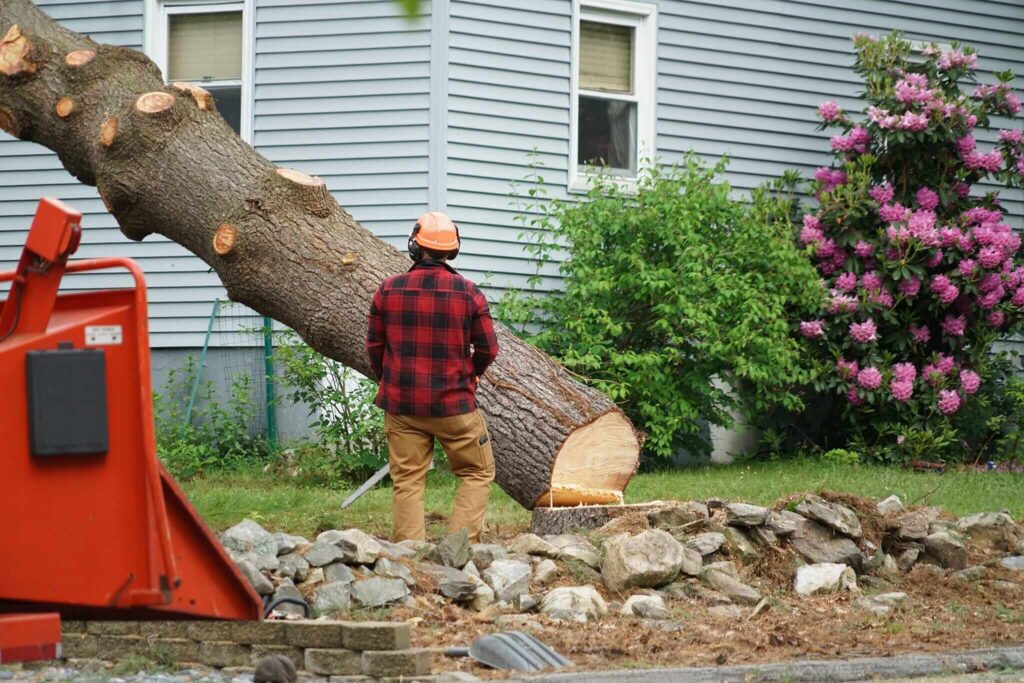Tree removal is an important aspect of property management that many homeowners will eventually face. Whether it’s due to storm damage, disease, or landscaping purposes, understanding how to safely and efficiently remove a tree is crucial. However, this task should not be taken lightly, as improper tree removal can pose significant risks to both property and personal safety. In this guide, we’ll walk you through everything you need to know about tree removal, from assessing whether it’s necessary to hiring a professional.
Why Tree Removal is Sometimes Necessary
Trees play a vital role in the beauty and health of your property, but there are times when removal becomes necessary. Common reasons include:
- Diseased or Dying Trees: Trees affected by disease or pests can become unstable, posing a risk to property or people.
- Damage from Storms: Strong winds, heavy rain, or snow can cause trees to lean or break, requiring immediate removal to prevent accidents.
- Overcrowding: Sometimes, trees grow too close to each other or structures, restricting light and air circulation, or damaging property foundations.
- Landscape Renovation: Homeowners may wish to remove trees for a clearer view, to create space for construction, or to redesign a garden.
Once the decision is made to remove a tree, the next steps are crucial for ensuring a smooth and safe process. Before you proceed, it’s important to consider the cost, time, and expertise involved in effective tree removal.
Assessing Tree Condition and Safety Risks
Before initiating the tree removal process, homeowners should assess the condition of the tree and the associated risks. This helps in determining whether professional help is required. Signs that a tree needs to be removed include:
- Dead branches, especially in the crown.
- Fungal growth on the trunk or at the base.
- Large cracks or splits in the bark.
- Leaning or tilting at a noticeable angle.
If any of these signs are present, especially in large trees, it’s best to contact a professional for tree removal to ensure the safety of your property and surroundings.
DIY Tree Removal vs. Hiring a Professional
While removing small trees might seem manageable as a DIY project, large or damaged trees should be handled by professionals. Tree removal involves complex processes that can quickly become dangerous without the right equipment and knowledge.
When to DIY:
- Small Trees: Trees that are less than 15 feet tall are generally safe to remove if you have the right tools, such as pruning shears, hand saws, and safety equipment.
- Clear of Structures: If the tree is not near buildings, power lines, or other valuable property, you can attempt to remove it yourself with caution.
When to Hire a Professional:
- Large Trees: Trees taller than 15 feet or with thick trunks require specialized equipment like chainsaws, stump grinders, and cranes, making them too risky for DIY.
- Proximity to Structures: If the tree is near your home, garage, or utility lines, professionals are needed to prevent accidents or damage.
- Unstable or Diseased Trees: These trees may collapse unexpectedly and should always be handled by experienced tree removal experts.
Professional tree removal services are equipped with the knowledge and tools to manage difficult situations safely and efficiently.

The Tree Removal Process: What to Expect
When it comes to professional tree removal, understanding the step-by-step process helps homeowners prepare and plan accordingly. Here’s a breakdown of what to expect during the removal of a tree.
1. Initial Assessment
The tree removal company will inspect the tree and surrounding area to assess the risks and determine the best removal approach. The assessment will include checking the tree’s height, health, and proximity to structures.
2. Obtaining Permits (if required)
Some regions may require permits for tree removal, especially if the tree is protected by local regulations. Professionals will handle the permitting process for you.
3. Cutting Down the Tree
Depending on the size of the tree, it may either be felled in one piece or removed in sections. For large trees, professionals will use cranes or climbing equipment to cut branches and limbs in stages before cutting down the main trunk.
4. Stump Removal
Once the tree is down, the remaining stump can be left or ground down. Stump grinding removes the visible part of the stump, allowing for replanting or landscaping.
5. Cleanup
Professional services will typically remove all debris, branches, and wood after the tree removal is complete. This leaves your yard clean and safe.
Key Factors to Consider When Hiring a Tree Removal Service
Choosing the right tree removal service is key to ensuring the job is done safely and efficiently. Here are some essential factors to consider:
1. Experience and Credentials
Always verify that the company has experience in handling tree removal in your area. They should be licensed, insured, and certified arborists.
2. Safety Practices
Tree removal can be dangerous, so it’s important to ask about the company’s safety practices. Ensure they follow proper safety protocols and use protective equipment.
3. Equipment and Tools
Different trees require different tools for safe removal. Ensure the company has the right equipment, such as chainsaws, stump grinders, cranes, and safety harnesses.
4. Reviews and References
Check reviews from past clients to gauge the company’s reliability. Positive reviews and recommendations from neighbors or friends can help you feel confident in your choice.
5. Cost and Estimate
Before committing to a service, get a detailed estimate for the tree removal. Ask if the estimate includes additional costs such as stump removal, permits, and cleanup.

Costs of Tree Removal: What to Expect
The cost of tree removal varies based on several factors, including tree size, location, and complexity. Here’s a general guide to help you understand the average costs:
- Small Trees (Under 15 feet): $150 – $500
- Medium Trees (15 to 30 feet): $300 – $700
- Large Trees (Over 30 feet): $700 – $1,500 or more
These costs typically include cutting down the tree and removing debris, but stump grinding or other additional services may incur extra charges.
The Importance of Stump Removal
After a tree is removed, the remaining stump can become an eyesore or even a safety hazard. Leaving the stump can also lead to issues such as:
- Pest infestations: Stumps can attract termites, ants, and other insects.
- Regrowth: Some tree species will attempt to regrow from the stump, causing new problems.
- Obstruction in Landscaping: A stump can get in the way of gardening, mowing, or other outdoor activities.
Stump grinding is a cost-effective and efficient way to remove the stump and allow your yard to return to a smooth, usable space.
Tips for Post-Tree Removal Landscaping
Once the tree removal process is complete, many homeowners are eager to re-landscape the area. Consider these tips for post-removal landscaping:
- Replanting: If you want to replace the removed tree, choose a tree species that fits the space and requires less maintenance.
- Gardening: The open space can be transformed into a flower bed, vegetable garden, or a decorative feature.
- Mulching: Use wood chips from the removed tree to create a natural mulch for your garden, improving soil health.
Conclusion
Tree removal is a complex and potentially dangerous task, but when done correctly, it can significantly improve the safety and aesthetics of your property. Whether you opt for a DIY approach or hire a professional service, it’s essential to prioritize safety and efficiency throughout the process. By following the steps outlined in this guide, you’ll be better prepared to handle tree removal and make informed decisions about your property’s health and safety.
Choosing the right tree removal service can make all the difference, ensuring that the process is smooth, cost-effective, and, most importantly, safe. Remember, when in doubt, always consult with professionals for the best results.
Related: Why Hire a Certified Arborist? Benefits, Services, and How to Choose the Right One
